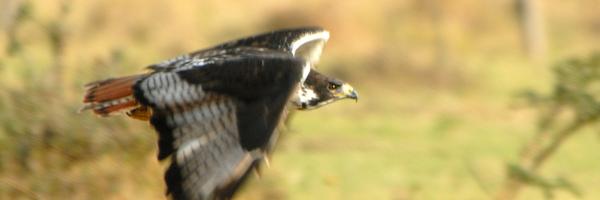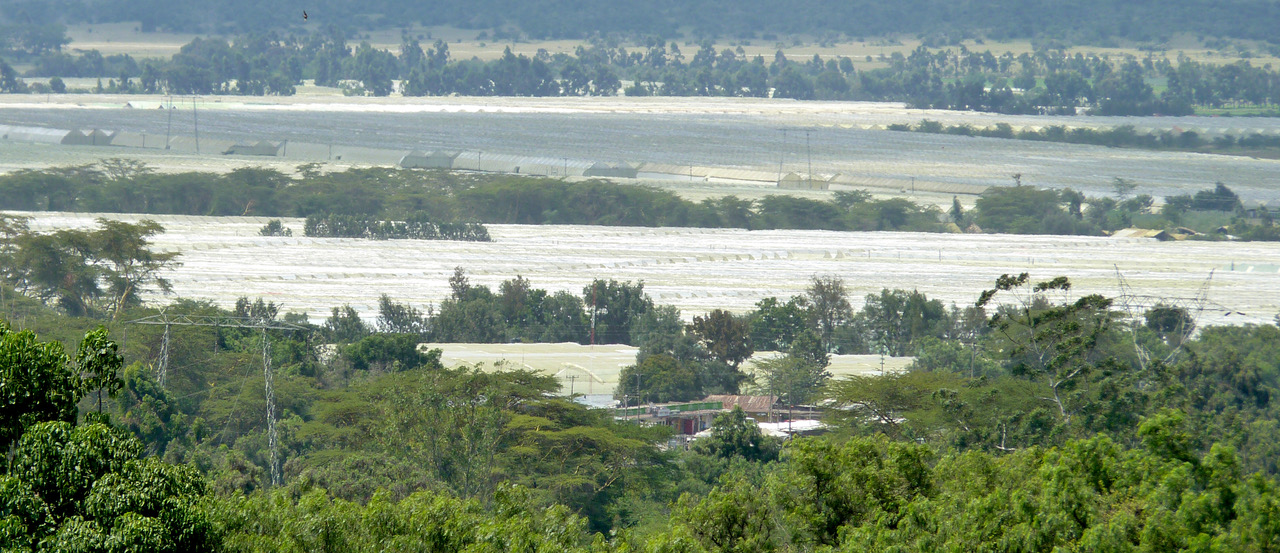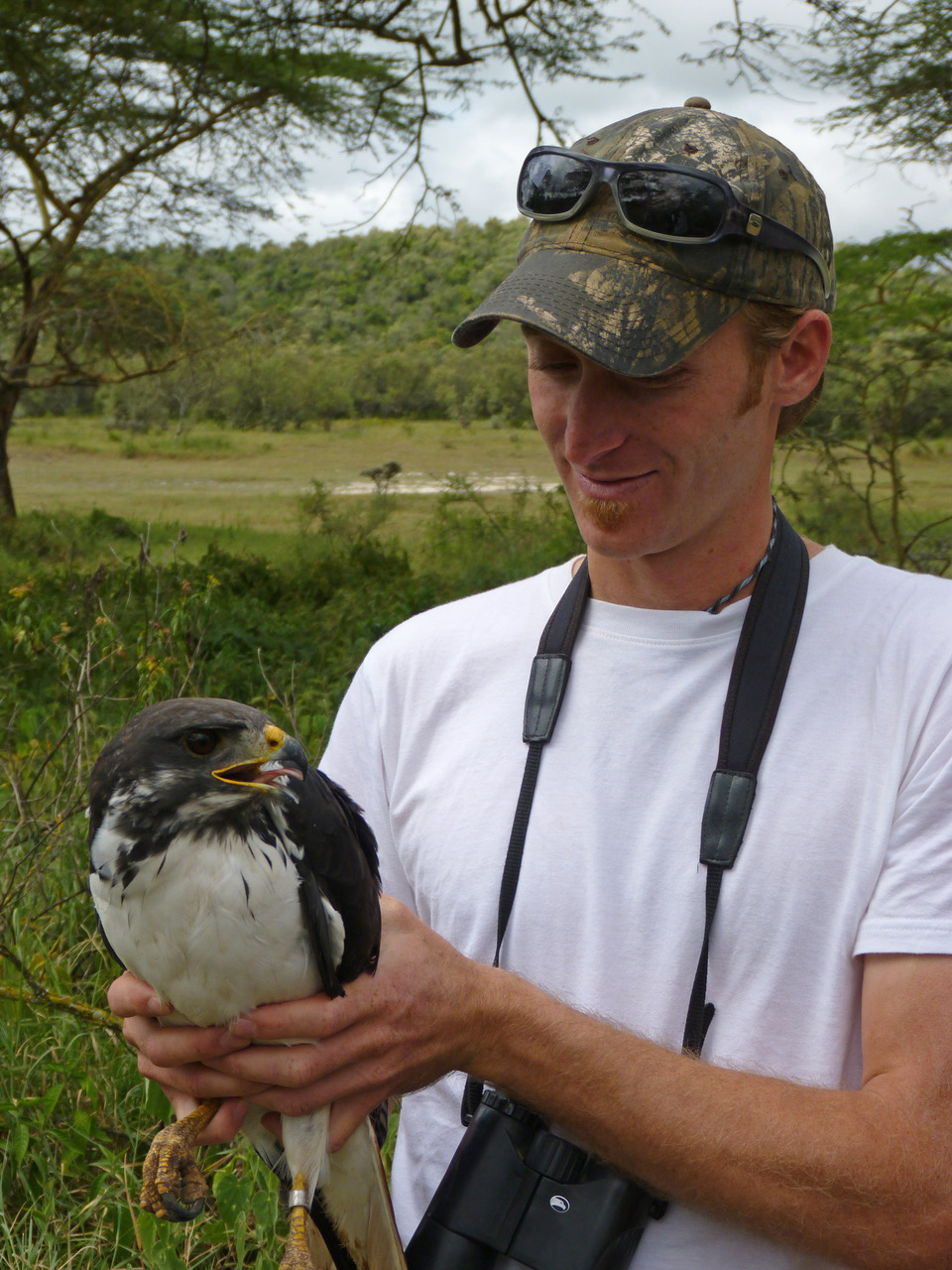The Augur Buzzard is a bird of prey common to eastern and southwestern Africa. However, just as common to sub-Saharan Africa, is a rapidly growing human population coupled with urbanization, agricultural intensification and industrialization. Though the International Union for Conservation of Nature and Natural Resources considers Augur Buzzards a Least Concern species, a recent study in Kenya’s Great Rift Valley region of southern Lake Naivasha shows a significant loss of nearly half of Augur Buzzard territories in two decades.
The collaborative study, published in Frontiers in Ecology and Evolution, with financial support from The Peregrine Fund and contributions from its Executive Vice President and Director of Global Conservation Strategy Dr. Munir Virani, took place between 1995 and 2014. The study, titled “Declines in an Augur Buzzard Buteo augur Populations in a Region of Increasing Human Development”, tracked the growing human development of five areas around Lake Naivasha in Kenya, a region that provides 75 percent of the country’s horticultural flower exports. This region once provided ideal habitats for the Augur Buzzard, and is the only location where there has been a long-term study of this species. The data from the long-term study proved startling to raptor biologists.
The study showed a 15 percent increase in the area’s human development footprint from 1995 to 2014. Over this same time period, there was a staggering 47 percent decrease in the number of occupied buzzard territories, indicating that this common raptor may be more susceptible to human development than once thought.
“In the race to develop Africa, this study demonstrates to the bird community that even previously thought common species such as the Augur Buzzard are declining at a rapid pace and need urgent conservation intervention,” said Munir Virani.
Surprisingly, the study did not find a direct link between an increase in human development and the decrease of Augur Buzzard territories. While data revealed that the most rapidly developing areas in the study’s range were experiencing higher rates of Augur Buzzard abandonment, even areas with strong environmental protection such as Hell’s Gate National Park were also experiencing significant declines in occupied territories, showing that there are likely other factors apart from human development leading to this result.
“Action needs to be taken to reverse the declines of this once common species, and more research is still needed to better understand what factors are driving this decline,” said Associate Professor Arjun Amar of the University of Cape Town.
One possible explanation for the decline is persecution. Researchers observed territory loss in close proximity to human settlements, meaning it is possible that residents are playing a role in diminishing the buzzard’s territory. If this were an effect resulting in territory loss, the development of the region would not directly be to blame. Considering that the Augur Buzzard is not officially identified as a conservation priority, this could be leading to a lack of awareness for the threats facing this iconic bird of prey. Other causes of mortality, as indicated by field observations in the region, are likely electrocutions and nest raiding by a growing population of baboons.
While there may be other influences affecting these raptors, one thing is made certain from this study—there is a need for heightened efforts to research and conserve the Augur Buzzard across the continent.
"Just because a bird of prey is of Least Concern (as defined by the IUCN RedList) doesn't mean that it isn't under threat,” said Adam Eichenwald, the lead author of the study.
In fact, we know now that raptors of Least Concern are declining the fastest within the birds of prey guild worldwide. It is crucial that we proactively head off some of these losses before they reach Endangered or Vulnerable status, since it will become progressively more and more difficult to pull these species back."
Dr. Evan Buechley of Hawkwatch International and a collaborator on the study said, “The Augur Buzzard is one of Africa’s most abundant and widespread raptors and is often considered to happily co-exist with humans. This paper provides a valuable insight into the challenges that even the most common species are facing in the 21st Century.”
Furthering the case to protect birds of prey regardless of conservation status, is a supplementary study led by Dr. Chris McClure, the Director of Science at The Peregrine Fund. In this 2018 study titled “State of the world’s raptors: distributions, threats, and conservation recommendations”, it was revealed that more than half of all raptor species around the world are in decline. Of those raptors, species considered Least Concern are facing the highest rates of decline.
“These implications apply to many species in Africa, not just raptors”, said Peter Tyrrell, an author of the study and a PhD student at the Wildlife Conservation Research Unit, University of Oxford.
With enormous changes predicted in land-use and resource utilization in eastern and southern Africa in the coming decades, it is crucial that species that appear to co-exist well with humans are monitored, and policies and actions are put in place to limit their declines in agriculture and semi-urban landscapes.”








